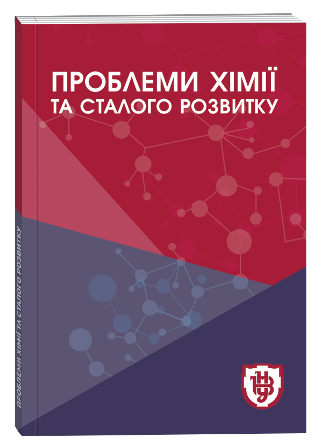COMBINATION OF METHODS OF HYDROCHEMICAL AND HYDROBIOLOGICAL ASSESSMENT OF THE ECOLOGICAL CONDITION OF THE RIVERBED
DOI:
https://doi.org/10.32782/pcsd-2021-1-7Keywords:
water quality, environmental assessment, indicator organismsAbstract
A comparative assessment of the hydrochemical composition of Mr. Lug is presented on the basis of observation points with the establishment of a water quality class, the identification of priority pollutants and the conduct of biotesthetics for the diagnosis of river water toxicity. The Integrated Ecological Water Quality Index for the points of observation varied from 1.7 (at the source) to I-II class up to 4.5 (m. Hodorov after the discharge of the wastewater) to IV class and on the river average 3.1, which classifies the water in the third class. The assessment of water quality at control points p. The Hironomid indicator organism (Chironomus dorsalis) found the most abundant samples at points 1, 2, 5: Chironomus dorsalis average abundance over 20 ecs. / m2. At point 3, the average number of indicator organisms was 5 ecs. / m2 and at point 4 – 12 ecs. / m2. The results of the definitions confirm the IV Water Quality Class in Sectors 3 and 4, similar to the assessment with the establishment of the Integrated Environmental Index. Daphnia magna (Daphnia magna) was used to diagnose the toxicity of the Lug River. Acute toxicity was characterized by the river’s water at point 3 (Khodorov – after the release of wastewater), as evidenced by the mortality of Daphnia magna 50.7% in the first 96 hours. The river water selected from point 4 (c. Dobrovlani) was not acutely toxic, although the IV water quality class was established at both control points. In general, the values of the water-quality classes p. Meadow by reference points reflect a change from Class II to Class IV, which is justified in view of the availability of waste water and the high level of economic development of the basin. The results demonstrate the need for a combination of surface water quality assessment methods, namely traditional hydrochemical assessments and bio-indicator methods. This approach is able to reflect the real situation of the water body and is logical when carrying out environmental assessments of the river bed.
References
Гриб Й.В., Клименко М.О., Сондак В.В., Гринюк В.І., Войтишина В.Й. Відродження екосистем трансформованих басейнів річок та озер (рекомендації до розробки ОВНС: Монографія./ за ред. д.б.н., професора Й.В. Гриба. Рівне : НУВГП, 2012. 246 с.
Мальцев В.І., Карпова Г.О., Зуб Л.М. Визначення якості води методами біоіндикації: науково-методичний посібник. Київ : Науковий центр екомоніторингу та біорізноманіття мегаполісу АН України, Інститут екології (ІНЕКО) Національного екологічного центру України, 2011. 112 с.
Крайнюкова А.М., Чистякова О.О., Крайнюков О.М. Комплексна оцінка екологічного стану водних об’єктів (на прикладі басейну р. Сів. Донець). Вісник Харківського національного університету імені В.Н. Каразіна. 2011. № 944, Вип. 6. С. 61–71
Крайнюков О.М., Крайнюкова А.М. Оцінка еколого-токсикологічного стану поверхневих вод Харківської області. Людина та довкілля. Проблеми неоекології. № 2(15), 2010. С. 74–82.
Відновна гідроекологія порушених річкових та озерних систем (гідрохімія, гідробіологія, гідрологія, управління). Том I. Гриб Й.В., Клименко М.О., Сондак В.В. Рівне : Волинські обереги. 1999. 348 с.
Руководсво по гидробиологическому мониторингу пресноводных екосистем. Санкт-Петербург : Гидрометеоиздат, 1992. 143 с.
Водна Рамкова Директива ЄС 2000/60/EC. Основні терміни та визначення. Київ: Твій формат, 2006. 240 с.
Біотестування у природоохоронній практиці. / Технічний комітет з стандартизації ТК 82 «Охорона навколишнього природного середовища та раціональне використання ресурсів України». Київ 1997. 240 с.







